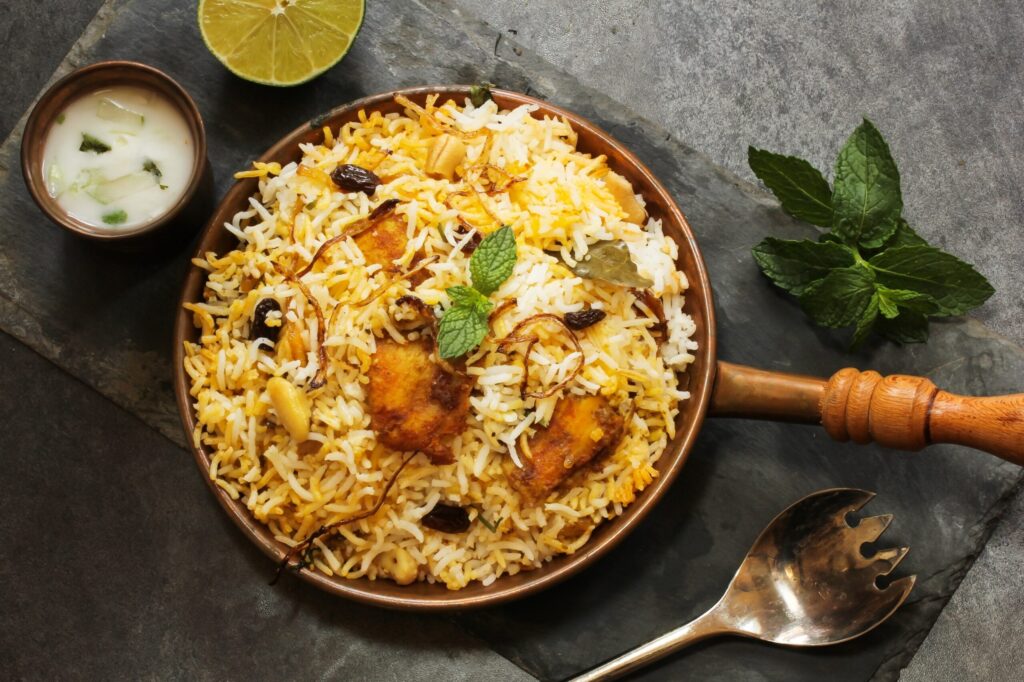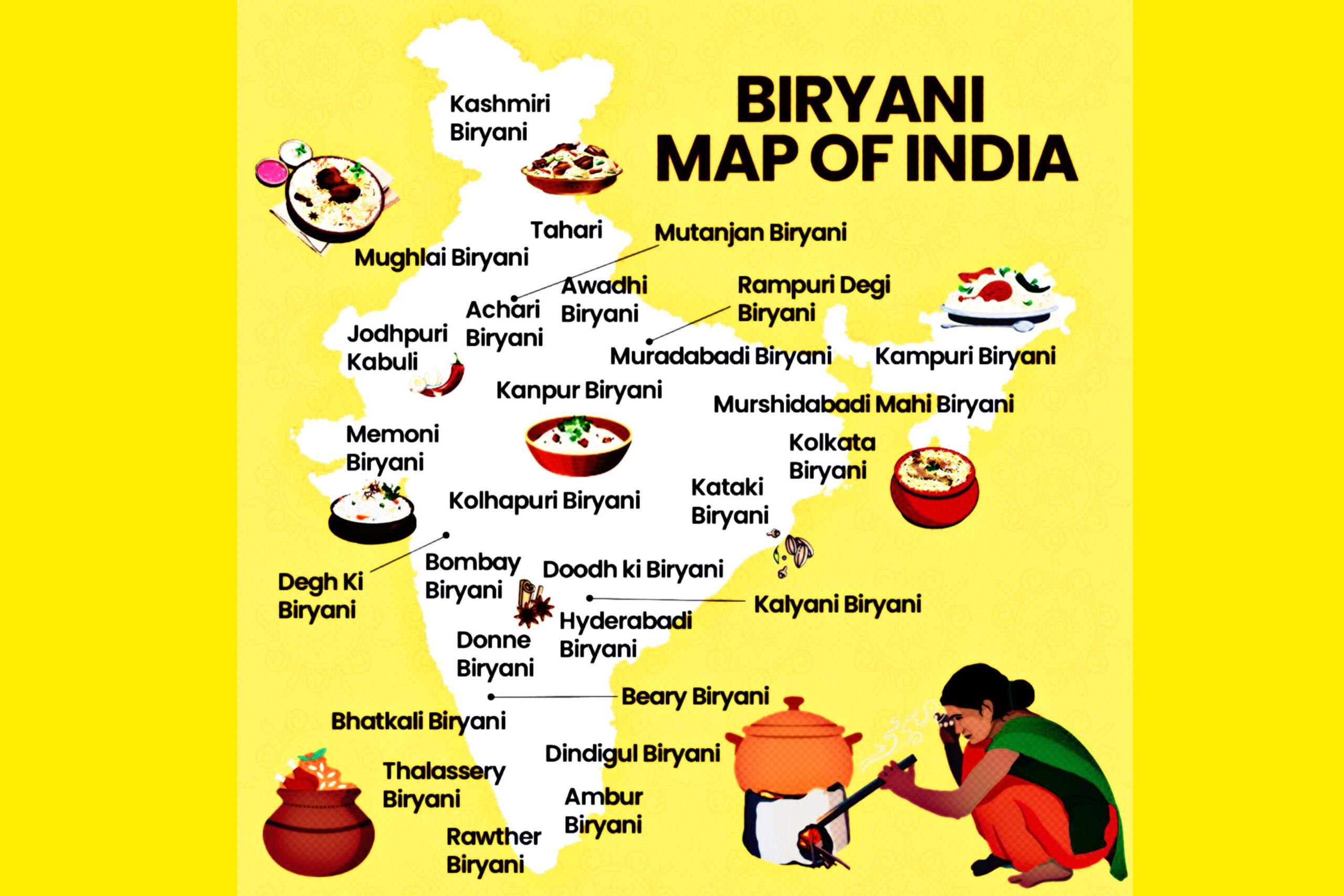
Being away from home this Eid what I’m missing is the biriyani that I used to savour all these years from my muslim friends, food is a very peculiar part of celebrations in the indian subcontinent, so as a biriyani in any muslim celebrations.
As per my knowledge biriyani was brought in by the bawarchi’s of the Mughal dynasty during their time in India and in literal terms the word ‘Biriyani’ meant Rich rice. For its strong aroma which came from the spices which were brought by the muslim traders and for the Aromatic basmati rice. As time passed biriyani has travelled across India adding and losing some of its ingredients and techniques.
To say about the different types of biriyani’s and their differences
Awadh or Lucknowi Biriyani
As per history the Biriyani came from the Mughal kitchens for the first time in the Awadh region of India which is now called Lucknow , the Lucknowi Biryani stands out due to its cooking style, known as dum pukht. The meat (or chicken) infused with spices is partially cooked separately from rice, which is flavoured with saffron, star anise and cinnamon. Both the meat and rice are then layered together in a handi (deep-bottomed vessel) and cooked for hours until the flavours deeply penetrate. The end result is soft Lucknowi biryani with mild flavours.
Hyderabadi Biriyani
Hyderabad biriyani is said to have originated from the kitchens of nizams and the Hyderabadi biriyani is cooked in two different techniques Kachchi & Pakki Biriyani. Where kachchi means raw, here raw meat is marinated and cooked along with raw rice and then dum cooked in sealed vessels and pack means cooked, here rice and meat are cooked separately and are then layered and given a dum in a sealed vessels. Hyderabad biriyani is always said that’s spicier than any biriyanis in India.
Calcutta Biriyani
Calcutta Biryani originates from Kolkata, although it has roots tracing back to the Awadhi style biryani of Lucknow. Characterised by subtle flavours with a tinge of sweetness and more sparing use of spices, it is cooked with light yellow rice, which is layered with yogurt-based meat, soft boiled eggs and potatoes. Add to that, saffron, nutmeg and kewra, which lends a soothing aroma to the biryani.
Donne Biriyani
The word Donne comes from the cup or a plate made from leaves in which the biriyani is served in. This variety of biriyani comes from Karnataka and its cooked with a short grain rice unlike other biriyanis. You can find this biriyani anywhere in Bangalore, at some places they serve this dish at 5 am and its sold out by 9am.
Beary Biriyani
A community living in the southern coast of Karnataka named beary’s make this variety of biriyani. The base of the biriyani is coconut ground along with mint coriander and other spices. They also make this biriyani with seafood like prawns and king fish.
Dindigul biriyani
Dindigul Biryani is an ever-popular dish that can be found at several outlets across Chennai. It is strong and tangy in flavour, which is derived from curd and lemon, mixed with cube-sized meat (mutton or chicken) and jeera samba rice. Also, a lot of pepper is used to give it a full-on zesty flavour. Served along with a thick curd mixed with thinly sliced onions.
Thalassery Biriyani
A not so spicy dish with lots of cashewnuts, raisins and fried onions this biriyani hails from the Kerala state of India.
The rice used for this biriyani is Khyma or Jeerakasala.
Ambur Biriyani
Ambur, a small town in the Vellore district of Tamil Nadu, famous for its lip-smacking biryani and its leather manufacturing units, can be considered as the place of origin of the Star Ambur Briyani. History traces it further to the kitchen of the Nawabs of Arcot, who had connections with the Hyderabadi Nizams.
There are many varieties of this dish cooked in India and around the world.
Do check the biriyani map by TheBetterIndia.

I’d like to conclude saying there’s nothing called veg-Biriyani! Its pulao!
See you soon, stay tuned!
